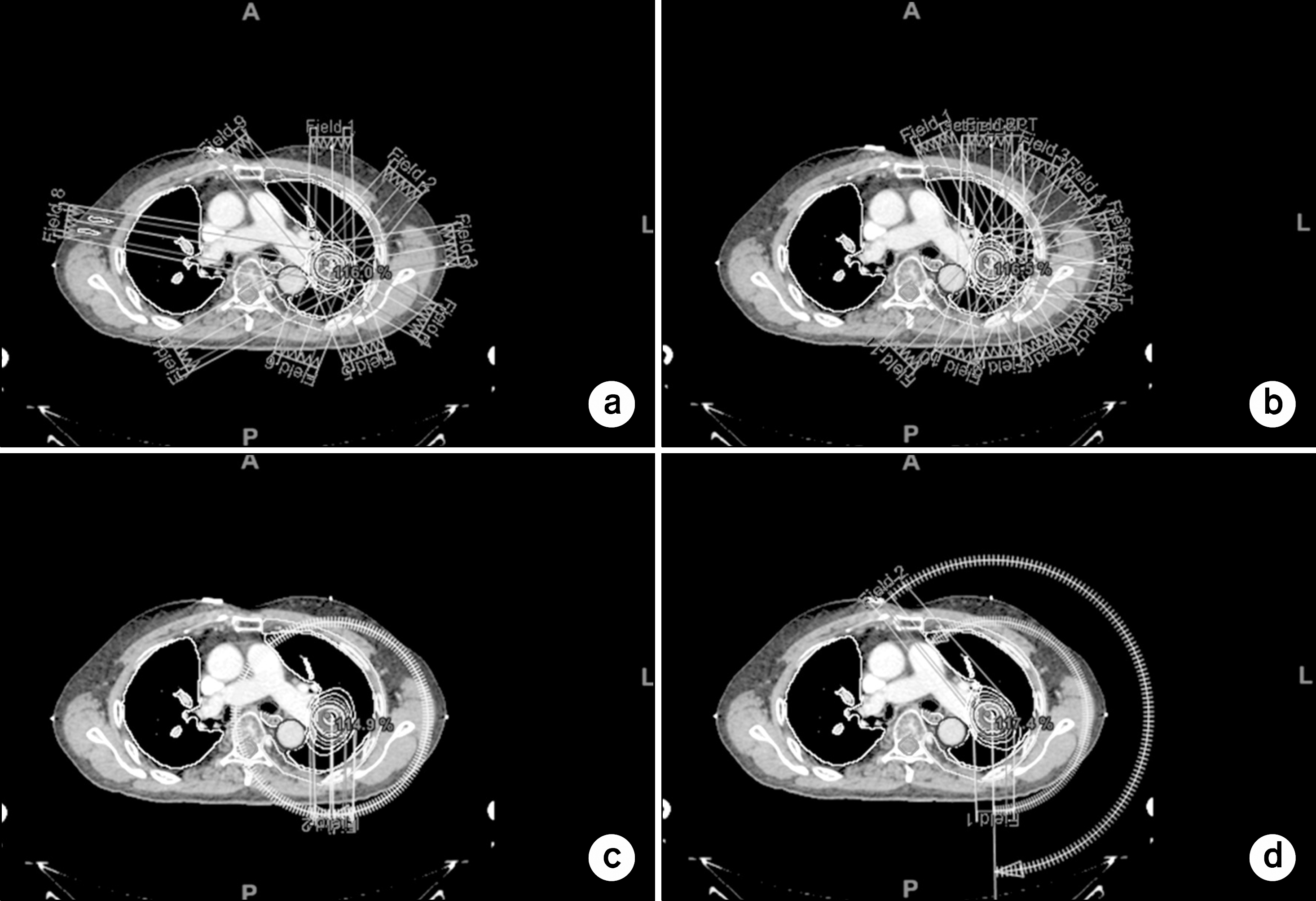1. Robert D, Timmerman MD, Brain D, et al. Stereotactic Body Radiation Therapy in Multiple Organ Sites. Journal of Clinical Oncology. 25:947–52. 2007.
2. Oh SA, Kang MK, Kim SK, Yea JW. Comparison of IMRT and VMAT techniques in spine stereotactic radiosurgery with international spine radiosurgery consortium consensus guidelines. Prog Med Phys. 24(3):145–153. 2013.

3. Lim DH, YI BY, Mirmiran A, et al. Optimal beam arrangement for stereotactic body radiation therapy delivery in lung tumors. Acta Oncologica. 49:219–224. 2010.

4. Mara WR, Catherine MK, Kelly MPC, et al. Circumferential or sectored beam arrangements for stereotactic body radiation therapy (SBRT) of primary lung tumors: Effect on target and normal-structure dose-volume metrics. Med Dos. 38:407–412. 2013.
5. Robert T, Rebecca P, James G, et al. Stereotactic Body Radiation Therapy for Inoperable Early Stage Lung Cancer, JAMA. 303(11):1070–1076. (201).
6. Nagata Y, Takayama K, Matsuo Y, et al. Clinical outcomes of a phase I/II study of 48 Gy of stereotactic body radiotherapy in 4 fractions for primary lung cancer using a stereotactic body frame. Int J Radiat Oncol Biol Phys. 63(5):1427–1431. 2005.

7. Timmerman R, Galvin J, Michalski J, et al. Accreditation and quality assurance for Radiation Therapy Oncology Group: multicenter clinical trials using stereotactic body radiation therapy in lung cancer. Acta Oncol. 45(7):779–786. 2006.

8. Dirk De R, Corinne FF, Ursula N, et al. European Organization for Research and Treatment of Cancer Recommendations for Planning and Delivery of High-Dose. High-Precision Radiotherapy for Lung Cancer. 28(36):5301–5310. 2010.
9. RTOG 0813: Seamless Phase I/II Study of Stereotactic Lung Radiotherapy (SBRT) for Early Stage, Centrally Located, Non-Small Cell Lung Cancer (NSCLC) in Medically Inoperable Patients. http://www.rtog.org/ClinicalTrials/ProtocolTable/StudyDetails. aspx?study=0813.
10. RTOG 0915: A randomized phase II study comparing 2 stereotactic body radiation therapy (SBRT) schedules for medically inoperable patients with stage I peripheral non-small cell lung cancer. http://www.rtog.org/ClinicalTrials/ProtocolTable/StudyDetails. aspx?study=0915.
11. Benedict SH, Yenice KM, Followill D, et al. Stereotactic body radiation therapy: The report of AAPM task group 101.Med Phys. 37:4078–101. 2010.
12. Oh SA, Kang MK, Yea JW, Kim SH, Kim KH, Kim SK. Comparison of intensity modulated radiation therapy dose calculations with a PBC and AAA algorithms in the lung cancer. Korea J Med Phys. 23:48–53. 2012.
13. Feuvret L, Noel G, Mazeron JJ, Bey P. Conformity index: a review. Int J Radiat Oncol Biol Phys. 64:333–342. 2006.

14. Ong CL, Verbakel WF, Cuijpers JP, et al. Stereotactic radiotherapy for peripheral lung tumors: A comparison of volumetric modulated arc therapy with 3 other delivery techniques Radiother Oncol. 97:437–42. 2010.
15. Holt A, van Vliet-Vroegindeweij C, Mans A, et al. Volumetric-Modulated Arc Therapy for Stereotactic body radiotherapy of lung tumors: A comparison with intensitymodulated radiotherapy techniques. Int J Radiat Oncol Biol Phys. 81:1560–7. 2011.






 PDF
PDF ePub
ePub Citation
Citation Print
Print


 XML Download
XML Download